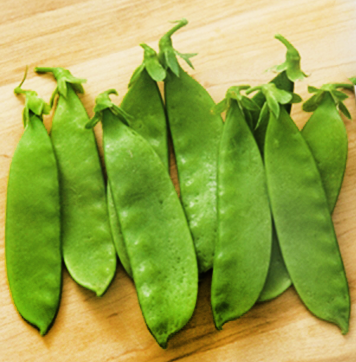- Vegetables
- >
- Peas
- >
- Oregon Giant Snow Pea
Oregon Giant Snow Pea
The best pea I've found for marginal weather, both cold and and heat; this also has the longest picking window of any I've tried. A large, sweet snow pea that stays sweet and non-fibrous even when the peas start to bulge in the pod. Plants grow to about 4' and the peas are generally 4 or even 6 inches long. Easier to pick than Oregon Sugar Pod, (the pods are not hidden in the foliage) and I think it holds longer on the vine as well. 100 seeds.
Like all peas, this does best if in cool conditions, so late summer plantings should be started in the shade if possible. This can be accomplished by using pots or flats in a shady spot, by using shadecloth or a bedsheet over supports in the planting area, or by some arrangement of branches, cardboard, or whatever your imagination suggests. Keep moist-- it helps to sow a little deeper in late summer than in spring and to use mulch on either side of the row.
I believe that this type of pea is properly called a carouby pea. It is larger, sweeter, and more tender than the flat "snow" types, However, most people call all flat, edible-pod peas "snow peas" and I have followed that custom rather than be needlessly obscure. Bred by Dr Jim Baggett at Oregon State University, a brilliant plantsman and a stanch champion of public domain, traditional plant breeding.

